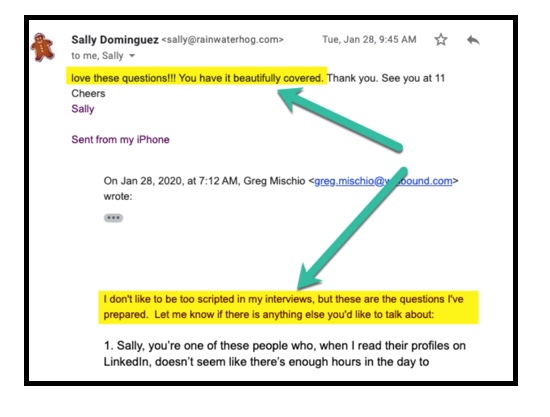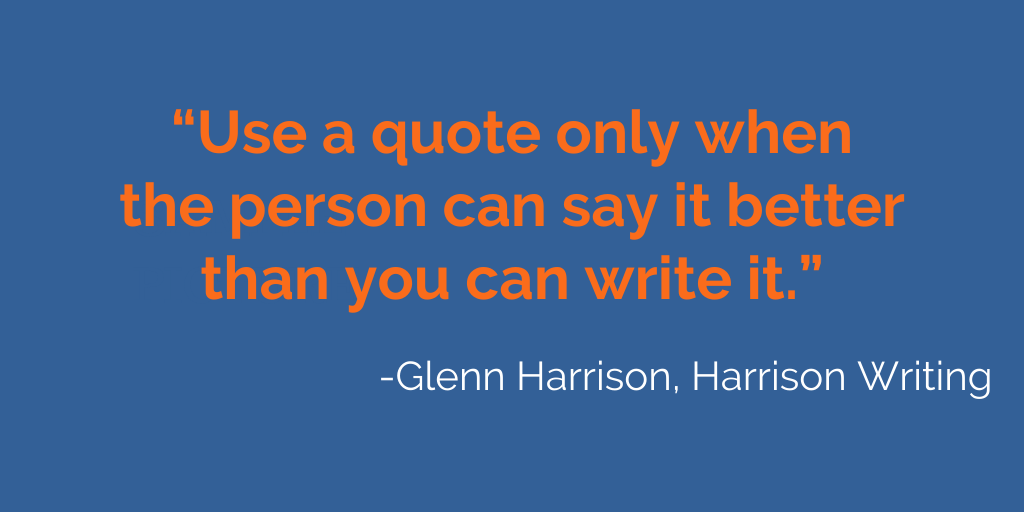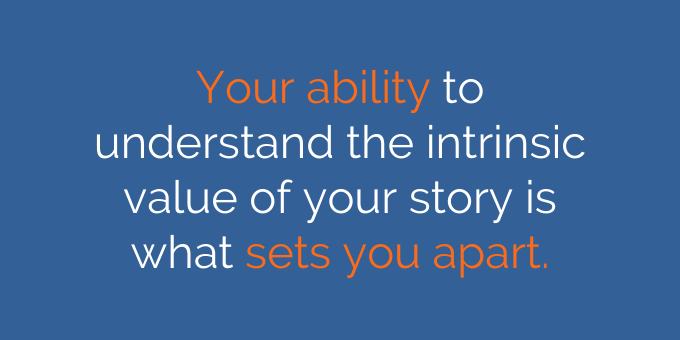What do you do if you’re trying to create great content for a technical audience, and you don’t have the technical background the subject matter demands? Here’s a number of tactics from Winbound and some other top writers, including the #1 thing writers need to keep in mind.
There’s a certain mind-numbing, panic-inducing fear that grips a writer dealing with technical subject matter they don’t understand.
In the course of dealing with clients in the manufacturing and industrial realm, I’ve experienced it many times myself. I’ll be interviewing a client, and they’ll start talking about a subject. And that’s when things get tough.
They don’t know that you don’t know
Either the person thinks I’m also an expert in the field, or they’re oblivious to the fact that I’m not, and they go deep. VERY deep.
They use terms I’ve never heard of. They delve into realms of STEM that I never knew existed. And after a half hour of them speaking in technical tongues, I exit the call feeling like a four-year-old in an adult world.
But you know what?
Two weeks later, I’ll deliver a piece of content that will be, by and large, approved by the subject matter expert with minimal corrections. Not only that, but the post will get rave reviews by the client’s marketing team.
So how do I do that? In this post, I’ll share my secret sauce, as well as tactics from some other top notch writers, including:
Kit Kiefer
Jeff Segal
Leslie Blaize
Vicky Franchino
Susan Greene
Catherine Bell
But let’s be clear about what I mean by “technical content.”
What is technical content?
Technical content is any type of digital or offline content that requires the insights of people with in-depth expertise in a given field. Even content writers familiar with subject matter in areas such as technology or manufacturing must rely on these experts to augment their own research.
We’re not talking about true technical writing, such as creating instructional manuals or training materials. The technical content I’m referring to in this post can be informational content produced by marketing teams for promotional purposes.
An eight-step technical content development process
1. Do some background research first by leaning on your client
Whatever you do, don’t go into that call cold. Get some cursory background info on the subject. Learn the broad strokes on what you’re going to be discussing, just enough to provide a nightlight so you’re not completely stumbling around in the dark.
This is really where you want to lean on your client for help. In writing a case study for a manufacturer, for example, I asked the client to share some questions I should be asking. I even invite the client to sit in on the call and chime in with support questions.
2. Send the questions to the client ahead of time
Not only is this common courtesy, but it gets them jazzed for the call. I’ve had clients get uber-excited when I serve up some provocative questions that show I’ve done my homework. Check out Sally Dominguez’s response as an example:

3. For the love of God, record the call
I take notes during the call, which I’ll get to in a second. But I record the call for when the subject matter starts speaking in technical tongues. This allows me to go back to the recording for clarification.
However, I don’t type out a verbatim transcript of the call (though I have writer friends who either do this themselves or hire a service to do it for them.) I feel like if I regurgitate exactly what they say in my article, then the regurgitation will read like, well, something regurgitated.
4. Rely on your notes to tell the story
Ok, so here’s where you add your true value as a writer.
During the call, I’m definitely probing for clarification and insights. But when I sit down and look at my notes, I shift into story-teller mode. I’m thinking about what’s the big insight from our call, and I’m formulating a narrative around it.
Then I write. I don’t sweat the details too much. I get 75% of the beast built, telling the story first and foremost.

Because folks — and this is the #1 thing you must remember — as a writer / marketer, you bring an outside perspective to the table. You see the bright, shiny object within everyone, and you have the talent to bring it to the forefront. That’s your gift. So let it flow, and let yourself go.
5. Circle back to the recorded call for clarification
My notes tend to be generally accurate. However, they may lack key details, so I use the recorded version to dig deeper.
Then I go to our friend, the Internet, to really flesh out the broad strokes on the subject matter. In the process, I’ll find an expert source, whom I can link to and even feature in the post.
(Naturally, I share the post with the expert source, who then hopefully shares it with his/her audience.)

6. You tell the story, let your expert speak the language
I’m not a big fan of long quotes from subject matter experts. Glenn Harrison of Harrison Writing, once gave me a piece of advice that’s long stuck with me: “Use a quote only when the person can say it better than you can write it.”
Your recorded version doesn’t translate into tight prose. Writing produces a different voice, one that flows and speaks to the theater of the mind. But every now and then, I interject that actual quote from the expert.
It adds authenticity to the piece, varies the writing, and acts like a piece of punctuation to drive home your point. For example, look at Glenn’s quote above. Perhaps not the most eloquent statement, but it’s for real.
7. Give them carte blanche to revise however they’d like
Before I write the article, I always assure the client and the interviewee that they can revise the article, and that I’ll likely need some help on the technical points. That takes a bit of the pressure off you to get everything precise.
Your job is to get that puppy published. Rely on the experts for expertise.
However, I do tell the client that if I completely missed the boat on a big concept, we should chat again and I revise the section. You absolutely don’t want someone extensively rewriting your article. They’ll destroy flow, narrative, and your deadline. That being said …
8. If they want to write it, let them write it
I recently had an assignment to interview Robert Tucker, an excellent public speaker and writer, on a topic. Before the call, he asked me to send him questions about what we’d be discussing.
The day before the call, Robert had responded to all my questions with in-depth, extremely well written answers. He essentially wrote the whole damn article, and he wrote it very well.
Normally writers are given lemons, which we are tasked with turning into lemonade. But when you’re given lemonade, just fill up the glass and serve. That’s what I did with Robert, turning his insights into a Q&A post. (Thanks, Robert!)
For win-win results, trust your magic
I think there was a point when Harry Potter was wand-fighting Voldemort, when Luke Skywalker was dueling Darth Vader, when Chief Brody was firing shotgun blasts at Jaws that each character said to themselves:
“Oh no, I’m dead.”
I have, at the end of each of those technical interviews. But folks, you gotta trust yourselves.

You were given a magical gift. Call it wizardry. Or the Force. Or a great big fear of being eaten. Whatever it is, your ability to understand the intrinsic value of your story is what sets you apart.
You are relying on the technical expert to wow you with details on how it works. They are relying on you to tell the story. Follow the steps above, and you will.
Ok, that’s my approach. Now let’s take a look at how other writers approach the task:
Tips From Top Technical Content Creators
Kit Kiefer, Polymath Research

Do the research
I like to find out as much about an organization or vertical as possible, so that means reading industry white papers, going to company websites and seeing what they talk about, and looking at Commerce Department data on a given industry. I might use a tool like Competiscan to help with CI, or a tool like BrightEdge to show me SEO.
Often I have to do medical or pharma research. In those cases, I may leverage my university connections and dive into scholarly research. It’s absolutely no fun, but you can learn a heckuva lot.
Look for commonalities
This often gets overlooked. Everyone in an industry likes to think that their industry is unique, and that’s rarely the case. Manufacturing is manufacturing; verticals often differ only in the tools they use. If I know printing, I can take some of that knowledge and apply it to tool-and-die making and ask, “How is the raw material converted?” and “What is the finishing process like?” and “How does distribution work?”
Similarly, B2B selling is B2B selling. You do prospecting pretty much the same way from industry to industry. You look for points of differentiation and hammer on them. So what becomes your job? Asking the salespeople for the points of differentiation, and why they’re important.
I was talking with a company that sells forklifts, and their selling process was exactly the same as the selling process Delta Dental of Wisconsin used. By finding the macro commonalities and relating them to something you already know about, you can make sense of what seems to be a really different industry.
Talk to salespeople
I like to talk to salspeople every chance I get because:
- A) They love to talk; and
- B) They spend their whole day trying to make what they sell important and intelligible to laymen.
Salespeople are great at helping a neophyte understand the ins and outs of a business. It’s what they do, basically, so it’s easy to leverage their knowledge. When I’m doing formal market research, they’re one of my first stops.
Take advantage of every opportunity to explore a new industry
The first time you have to dive into a specialized industry and talk highly technical lingo, it’s probably not going to go well. The fourth or fifth time you have to, it’s probably going to go pretty well.
You’re never going to be able to “fake it ’til you make it” if you never take those first steps.
Don’t be afraid of the unknown. Ask the questions, and do the work to make it known.
Employ my J-school skills
Often when I’m writing I approach my task like I’m a journalist again, trying to write a story. Who are my sources? What questions do I need to ask? and most importantly, How do I present the material?
Thinking “inverted pyramid” in cases like these, even if I don’t use the inverted pyramid, helps me organize my thoughts, pull together disparate elements, and make sense out of what I’ve been told.
Journalism may be a dying profession, but J-school skills never lose their usefulness.
Get old – in deeds, if not in years
Over my career, I’ve had to be fluent in esoteric print technologies, types of paper stock, print production, retail distribution and couponing, material handling, dental and vision health, the travel industry, the insurance industry, brewing and distilling processes, gunshot-detection systems, sports licensing, RFID technologies, horticulture businesses, special-needs care facilities, Medicare and Medicaid reimbursement regulations, learning management platforms, CRM systems, and much more.
After a while, you see patterns and commonalities in everything.
If you take advantage of every opportunity, you’ll be better able to relate something from your past to your current situation – and often, that’s all you need to make the unintelligible intelligible.
Jeff Segal, Senior Copywriter, StudioNorth

I frequently interview people about subjects where I have zero or very minimal knowledge, and my most effective “tactic” is to be very candid about having zero or very minimal knowledge:
- I state upfront that I’m “just a writer for an ad agency,” not a professional in their field.
- I ask forgiveness in advance for asking “dumb questions.”
- I’m never shy about saying things like, “Hey, you kind of lost me there. Can you explain X, Y and Z in a little more detail?”
- After all my questions, I ask, “Is there anything important you wish that I had asked you?”
- When we’re done, I assure them I’ll send them a draft so they can “correct all my mistakes,” and make sure “I’m capturing exactly what they want to say.”
This all may seem very coy, but most SMEs enjoy the opportunity to explain an important facet of their job to someone in a “blank slate” situation, and there’s an almost palpable surge of enthusiasm when they sense the newbie “gets it.” I don’t just get the facts, but I capture how they feel about those facts.
Catherine Bell

I find myself working with many companies where I have very little knowledge of the subject at hand. Frankly, it’s what I love about my work! Recently, a client summed up what I, as an outsider, brought to the table. She said it in such a lovely way that I thought I’d share it. She said that she had worked with many marketing departments before, but they came at projects with a distinct marketing viewpoint before getting to know the industry. It frustrated her that they would try to make the facts fit their already-formed marketing plan. She appreciated my approach because of my genuine curiosity and enthusiasm for asking real questions from various angles. I couldn’t have said it better myself!
Curiosity, an open mind, and lots of research are how I start any writing project. We often overlook our general knowledge before diving into a Google search, so that’s the first step. I write down all that I think I know about a subject, and then I start asking myself questions. That’s when I usually end up debunking many of my assumptions and forming more in-depth questions to ask the client and those in the client’s industry, including the customers.
Of course, Google does come into play as well. Using the search bar and seeing the drop-down of frequently searched words on any given subject can increase my curiosity and expand my knowledge base. Looking at my client’s competition and using other sites like “Ask the Public” is another good way to find meaningful angles on a topic. And then, when I’m ready to get serious, I dive into Google keyword planner.
Once I’ve gathered all my research, an old fashion outline with a thesis statement helps me stay focused. Of course, writing for the internet means I’m dealing with shorter attention spans and lots of competition for that attention. So, I break the information up and make sure I’ve got great titles and subtitles drawn in those key search words I found during my research.
Finally, I want to make sure my reader knows what to do with the information they’ve either wholly consumed or just skimmed. A strong call to action gets that job done (and usually, I have more than one to meet the needs of a variety of audiences).
Susan Greene

Put the focus on benefits
What helps me most in writing on technical subjects is speaking with the engineers, scientists or programmers who are involved in developing the product or service. They can usually explain in layman’s terms what makes their product unique and how it compares to competitor products (all of which I then Google and check out). Sometimes they even put together a brief report to educate their marketing department and salespeople about the product. If I can get my hands on that document, I can accelerate my learning curve.
Even though the subject matter may be complex, often the target audience is someone with a limited understanding of tech issues. My job as a tech copywriter is to simplify the information and put the focus on benefits rather than the features. It’s a lot like bringing your clothes to the dry cleaner. You really don’t care what machines, chemicals or processes the cleaner uses (features), as long as when you return to the store your clothes are clean and ready for pickup (benefits).
Leslie Blaize

My journey into the world of backflow preventers began with a great guide. My marketing contact found me through LinkedIn and asked for my assistance in writing blog posts. From the beginning, I was upfront. I told her I didn’t know anything about backflow preventers, but I could learn.
My contact appreciated that I had a background in the Architecture/Engineering/Construction industry. That gave me insights into challenges faced by both public entities and engineers. She was ready to help me understand the world of backflow preventers.
I discovered that backflow assemblies prevent contaminated water from flowing back into the public water system. You’ll typically find non-residential devices in above-ground enclosures or vaults. Knowledgeable entities include backflow preventer specifications in building plans.
In my initial interview with my contact, I asked for background information from her employer, a manufacturer of custom aluminum enclosures that protect equipment, including backflow preventers. She sent me previous blog posts and related news articles.
I also turned to the following sources before I started my first project:
- Company website
- Related trade associations
- Video on backflow preventers
In her creative briefs, my contact indicated what information she was seeking. A sales representative sent an email introducing me to my interview subjects. From there, I conducted the interviews and wrote up the blog posts.
Despite a pretty steep learning curve, the posts got easier. I learned about the industry and the challenges faced by public entities, owners and backflow preventer testers. Throughout it all, I remained curious and ready to ask questions to get the information I needed. After a few posts, my comfort level with the topic increased, and I could start suggesting content ideas.
Vicky Franchino

My writing process for these pieces:
- Pick your client’s brain. They often have a good feel for what they want to cover. Bonus points if the client already put together an outline to discuss.
- Use tools listed below to learn more.
- Write a draft. I’m a big believer in Annie LaMott’s Sh***y First Draft. Don’t just stare at that empty screen, write something.
- Sit on draft. Revisit and edit draft.
- Send draft to client.
- Repeat above steps as necessary.
Tools I use in the process (none of these is rocket science):
- Google. Isn’t this where we ALL learn about topics we know nothing about?
- Wikipedia. Great for gaining a basic understanding of a topic and footnotes can prove to be quite helpful.
- A great subject matter expert. If you can find someone with the time/patience to answer some questions, that can go a long way toward building a better piece. Do some homework first—understand the basics so you’re asking a few pertinent questions, not wasting the person’s time.
- Topic-relevant websites/publications. Every industry/subject has these and they can be invaluable.
- Library research tools (typically available through their website–one more reason why I love the library). I confess to not using these as much recently, but many allow you to search on both consumer pubs and academic journals and can be quite helpful.
Why writers add value to these pieces (as opposed to just having the technical person write it):
- Writing skills. I know plenty of technical people who are fantastic writers, but it’s not everyone’s skill set. When it’s not, hey, give me a call.
- A fresh perspective—especially if the audience isn’t technical either. As a newbie to the subject, I’ll have a better understanding of what is confusing/not well understood about the topic and help you minimize jargon and convey your content in a clear and compelling way.
There you have it, folks. Now that you’ve got the tactics and the strategy, go crank out that technical content!

